- Monarda Overview
- Types and Varieties
- Growing Monarda
- Uses of Monarda
- In Summary
- Growing Monarda in Your Garden
- Choosing the Right Location
- Planting Monarda
- Watering and Fertilizing
- Pruning and Maintenance
- Pest and Disease Control
- Attracting Pollinators
- Conclusion
- Choosing the Right Monarda Varieties
- 1. Growing Conditions
- 2. Height and Spread
- 3. Flower Color
- 4. Bloom Time
- 5. Disease Resistance
- 6. Companion Plants
- 7. Personal Preference
- Monarda Didyma: A Popular Type
- Monarda Citriodora: A Citrusy Delight
- Monarda Fistulosa: A Native Beauty
- Monarda Punctata: A Unique Spotted Variety
- Appearance
- Growth and Care
- Uses
- Conclusion
- Questions and Answers:
- What is Monarda?
- What are the different types of Monarda?
- How do you grow Monarda?
- What are some popular varieties of Monarda?
- Can Monarda attract bees and butterflies to my garden?
- Videos: Moving the bee balm Bergamot on How to Grow a Garden with Scarlett
If you’re an avid gardener looking to add some vibrant color and fragrance to your yard, consider growing Monarda, also known as bee balm or bergamot. Monarda is a beautiful flowering plant that is native to North America and belongs to the mint family. It is well-loved for its stunning flowers and aromatic leaves, which attract bees, butterflies, and hummingbirds, making it the perfect addition to any pollinator garden.
There are several different types of Monarda available, each with its own unique characteristics and growing requirements. The most common types include Monarda didyma, Monarda fistulosa, and Monarda citriodora. Monarda didyma, also known as scarlet bee balm, is perhaps the most widely grown variety. It produces large, vibrant red flowers that are sure to make a statement in your garden. Monarda fistulosa, or wild bergamot, has a more subdued appearance with pale purple flowers and narrow leaves. Monarda citriodora, also known as lemon bee balm, features bright pink flowers and leaves with a lemony fragrance.
When it comes to growing Monarda, it thrives in full sun to partial shade and prefers moist, well-draining soil. This versatile plant can be grown in both containers and flower beds, adding versatility to your garden design. Monarda is relatively low-maintenance and can tolerate a variety of soil conditions, although it’s important to keep the soil consistently moist to prevent wilting. Regular deadheading will prolong the blooming period and prevent the plant from self-seeding.
In addition to its beauty and ease of cultivation, Monarda has a variety of medicinal uses. The leaves and flowers can be brewed into a tea that is known for its soothing properties and ability to relieve common ailments such as headaches and indigestion. The leaves can also be used in salads or as a garnish to add a refreshing kick to your dishes. With its stunning blooms, attractive foliage, and multiple uses, Monarda is truly a versatile and valuable addition to any garden.
Monarda Overview
Monarda, also known as Bee Balm or Bergamot, is a popular flowering plant that belongs to the mint family. It is native to North America and is commonly found in wildflower meadows and woodland areas. Monarda plants are known for their vibrant and showy flowers, as well as their aromatic foliage. They can add color and fragrance to any garden or landscape.
Types and Varieties
There are several different types and varieties of Monarda that you can choose from, each with its own unique characteristics. Some popular types include:
- Monarda didyma: Also known as Scarlet Bee Balm, this type is famous for its bright red flowers and minty fragrance.
- Monarda fistulosa: Also known as Wild Bergamot, this type has pale purple flowers and is a favorite of bees and butterflies.
- Monarda citriodora: Also known as Lemon Bee Balm, this type has pink flowers and a lemony scent.
- Monarda punctata: Also known as Spotted Bee Balm, this type has unique, spotted flowers and is highly attractive to hummingbirds.
Growing Monarda
Monarda is a relatively easy plant to grow and care for. Here are some tips for growing Monarda in your garden:
- Planting: Choose a sunny or partially shaded location with well-drained soil.
- Watering: Monarda requires regular watering, especially during dry periods. However, avoid overwatering to prevent root rot.
- Fertilizing: Apply a balanced fertilizer in the spring to promote healthy growth and flowering.
- Pruning: Prune Monarda plants after flowering to encourage bushier growth and prevent them from becoming leggy.
- Pest and Disease Control: Watch out for common pests like aphids and powdery mildew. Use organic pest control methods if necessary.
Uses of Monarda
Monarda plants have both decorative and practical uses. Some common uses include:
- Ornamental: Monarda’s vibrant flowers make it a popular choice for adding color to flower beds, borders, and containers.
- Culinary: The flowers and leaves of certain Monarda varieties can be used in teas, salads, and other culinary creations. They have a unique spicy, minty flavor.
- Medicinal: Monarda has a long history of use in Native American traditional medicine. It is believed to have analgesic, antibacterial, and antifungal properties.
- Wildlife Attraction: Monarda plants are highly attractive to bees, butterflies, and hummingbirds, making them a great addition to wildlife-friendly gardens.
In Summary
Monarda, also known as Bee Balm or Bergamot, is a versatile and attractive plant that can bring color and fragrance to any garden. With its different types, easy care requirements, and multiple uses, Monarda is a great choice for both beginner and experienced gardeners.
Growing Monarda in Your Garden
Monarda, also known as Bee Balm or Bergamot, is a beautiful flowering plant that can bring vibrant color and fragrance to your garden. With its unique blooms and attractive foliage, Monarda is a popular choice among gardeners. Here are some tips for successfully growing Monarda in your garden.
Choosing the Right Location
Monarda thrives in full sun to partial shade, so choose a location in your garden that receives at least 6 hours of direct sunlight each day. The soil should be well-draining and rich in organic matter. Avoid planting Monarda in areas with standing water or heavy clay soil.
Planting Monarda
Spring is the best time to plant Monarda. Dig a hole that is twice the size of the root ball and place the plant in the hole, ensuring that the crown is level with the soil surface. Backfill the hole with soil and gently firm it around the plant. Water thoroughly after planting.
Watering and Fertilizing
Keep the soil consistently moist, but not soggy. Water deeply whenever the top inch of soil feels dry. Avoid overhead watering, as this can lead to leaf diseases. Apply a balanced fertilizer in early spring and again in mid-summer to promote healthy growth and abundant blooms.
Pruning and Maintenance
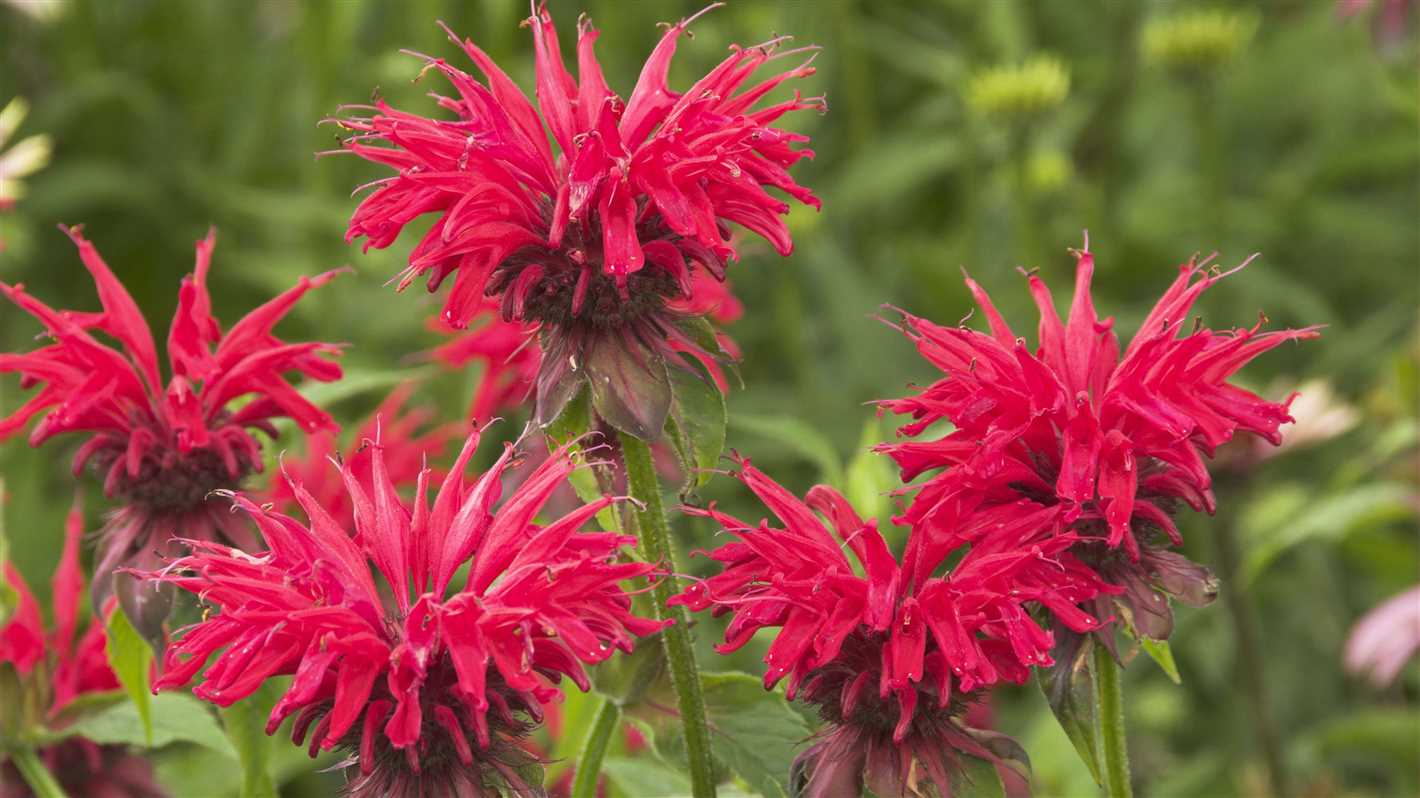
To maintain a neat and compact appearance, prune Monarda after it has finished blooming. Cut the stems down to the base of the plant to encourage new growth. Mulch around the base of the plant to suppress weeds and retain moisture.
Pest and Disease Control
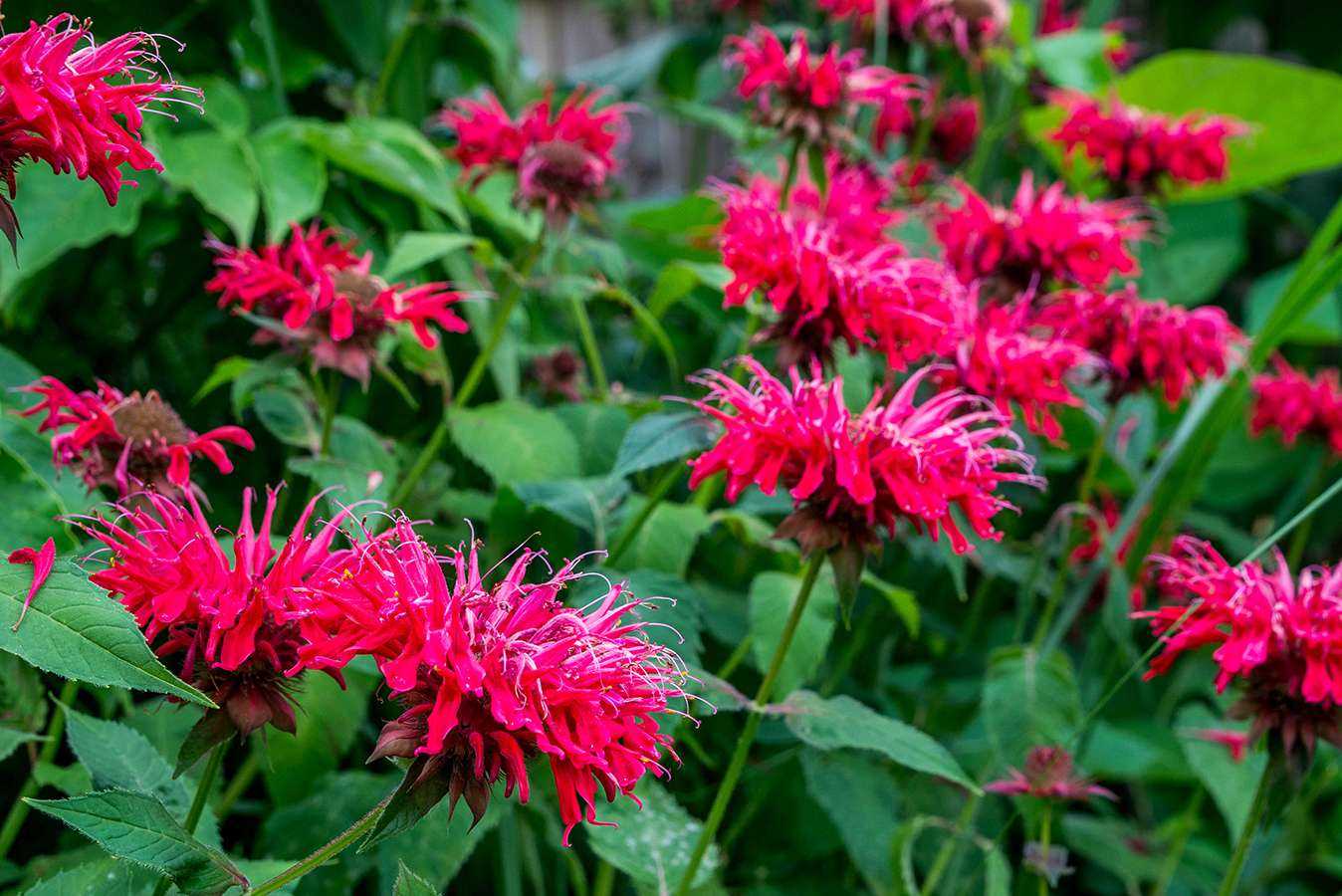
Monarda is generally resistant to pests and diseases, but it can occasionally be susceptible to powdery mildew. To prevent powdery mildew, provide good air circulation around the plants and avoid overhead watering. In severe cases, fungicides may be necessary.
Attracting Pollinators
Monarda is a favorite among bees, butterflies, and hummingbirds. By planting Monarda in your garden, you can help support these pollinators and create a vibrant and lively ecosystem. Be sure to include other plants that attract pollinators to maximize their presence in your garden.
Conclusion
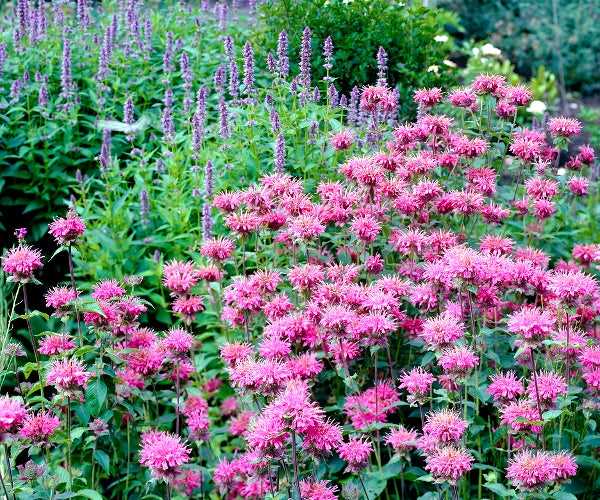
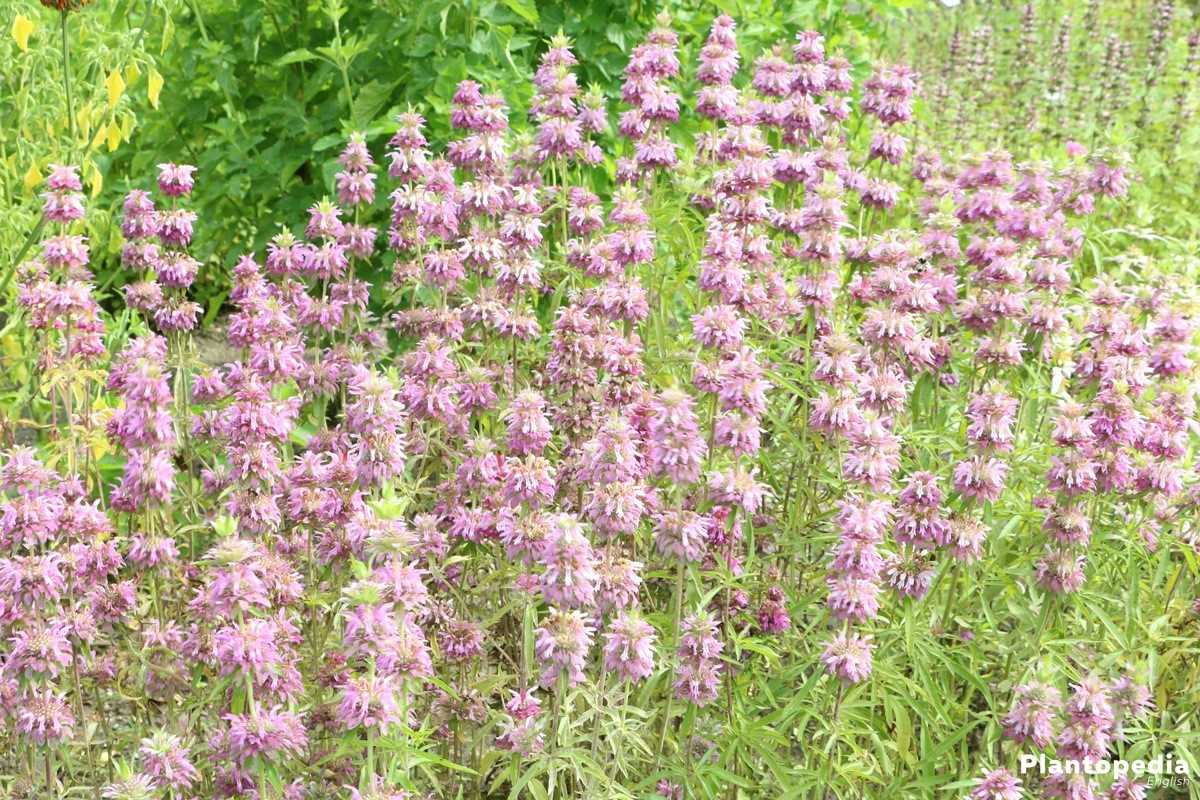
With its beautiful blooms, attractive foliage, and ability to attract pollinators, Monarda is a great addition to any garden. By following these tips for growing Monarda, you can enjoy its beauty and fragrance for years to come.
Choosing the Right Monarda Varieties
When it comes to choosing the right monarda varieties for your garden, there are several factors to consider. Here are some things to keep in mind:
1. Growing Conditions
Monarda plants prefer full sun to partial shade and well-draining soil. Before selecting a variety, assess the growing conditions in your garden to ensure it will thrive.
2. Height and Spread
Consider the height and spread of the monarda variety you are interested in. Some varieties, such as Monarda didyma, can grow up to 3 feet tall, while others, like Monarda punctata, stay around 1-2 feet in height.
3. Flower Color
Monardas come in a variety of colors, including shades of pink, purple, red, and white. Choose a color that complements the existing plants and aesthetics of your garden.
4. Bloom Time
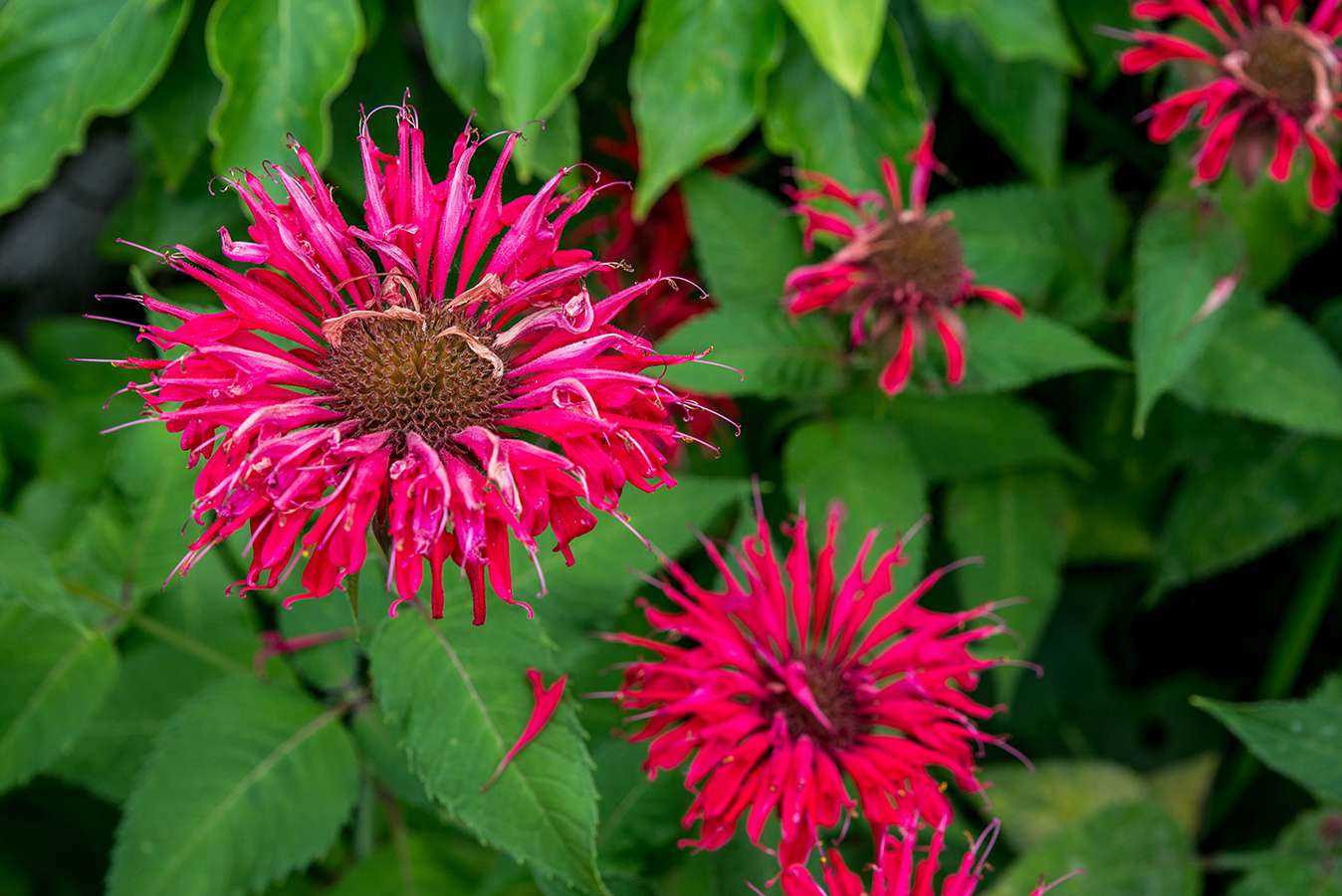
Different monarda varieties have varying bloom times throughout the growing season. Consider whether you want a variety that blooms early in the spring, late in the summer, or somewhere in between.
5. Disease Resistance
Some monarda varieties are more resistant to common diseases, such as powdery mildew, than others. Research the disease resistance of different varieties, especially if your garden has a history of disease problems.
6. Companion Plants
Think about the other plants in your garden and choose a monarda variety that will complement them. Monardas are often used in pollinator gardens and work well when planted alongside other pollinator-friendly plants like Echinacea and Agastache.
7. Personal Preference
At the end of the day, choose a monarda variety that you personally enjoy. Whether it’s the color, scent, or overall look of the plant, go with what appeals to you and fits your garden’s style.
| Variety | Height | Spread | Flower Color | Bloom Time | Disease Resistance |
|---|---|---|---|---|---|
| Monarda didyma | 2-4 feet | 1-3 feet | Red | Early to mid-summer | Medium |
| Monarda fistulosa | 2-4 feet | 1-3 feet | Purple | Mid-summer to early fall | High |
| Monarda punctata | 1-2 feet | 1-2 feet | Yellow and purple | Mid-summer to early fall | Medium |
By considering these factors and doing some research on the different monarda varieties available, you can find the perfect ones for your garden. Whether you’re looking for bold red blooms or subtle purple hues, there’s a monarda variety out there for you.
Monarda Didyma: A Popular Type
Monarda Didyma, also known as bee balm or scarlet beebalm, is one of the most popular types of Monarda plants. It is native to North America and is commonly found in gardens across the continent. Here are some key features of Monarda Didyma:
- Appearance: Monarda Didyma is a perennial herb that grows up to 3 feet tall. It has square stems and lance-shaped, aromatic leaves. The flowers of Monarda Didyma are showy and come in shades of red, pink, or purple.
- Attractiveness to pollinators: Monarda Didyma flowers are a favorite of bees, hummingbirds, and butterflies. The bright colors and nectar-rich flowers attract these pollinators to the garden.
- Growth and cultivation: Monarda Didyma grows best in full sun to partial shade and well-draining soil. It is a hardy plant that can tolerate a range of soil types. Regular watering and mulching are important to keep the soil moist.
- Uses: Monarda Didyma is primarily grown as an ornamental plant in gardens. It adds color and attracts pollinators to the garden. The flowers of Monarda Didyma can also be used to make tea and the leaves have a minty flavor that can be used in cooking or as a herbal remedy.
If you’re looking to add beauty and wildlife to your garden, Monarda Didyma is an excellent choice. Its vibrant flowers and ability to attract pollinators make it a popular type of Monarda plant for any garden.
For more information on Monarda plants, check out our other articles on different types and varieties!
Monarda Citriodora: A Citrusy Delight
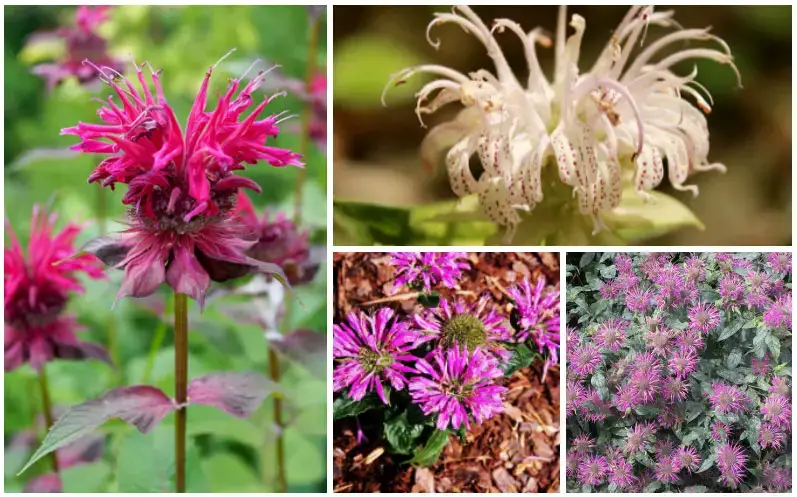
If you’re looking to add a burst of citrusy aroma to your garden, look no further than Monarda citriodora. This unique variety of Monarda, also known as lemon bee balm or lemon mint, is famous for its lemony scent and beautiful flowers.
Characteristics:
- Height: Monarda citriodora typically grows to a height of 1 to 2 feet.
- Leaves: The leaves are lance-shaped and have a distinct lemon scent when crushed.
- Flowers: The plant produces clusters of tubular, pinkish-purple flowers that attract bees and butterflies.
Growing Conditions:
If you want to grow Monarda citriodora in your garden, here are some important growing conditions to consider:
- Sunlight: Monarda citriodora thrives in full sun to partial shade.
- Soil: It prefers well-drained soil, but can tolerate a variety of soil types.
- Water: Keep the soil consistently moist but not waterlogged.
- Temperature: Monarda citriodora is a hardy perennial that can tolerate a wide range of temperatures.
Uses:
Monarda citriodora has a variety of uses, both in the garden and beyond. Here are some popular ways to enjoy this citrusy delight:
- Garden Borders: Plant Monarda citriodora along garden borders to add a pop of color and fragrance.
- Herbal Tea: The leaves of Monarda citriodora can be dried and used to make a delicious and aromatic herbal tea.
- Insect Repellent: The lemony scent of Monarda citriodora is known to repel mosquitoes and other pesky insects.
- Culinary Uses: Some people also use the leaves of Monarda citriodora to flavor salads, beverages, and desserts.
Caring Tips:
To keep your Monarda citriodora thriving, here are some helpful caring tips:
- Pruning: Regularly prune the plant to promote bushier growth and prevent it from becoming leggy.
- Deadheading: Remove faded flowers to encourage more blooms and extend the flowering season.
- Fertilization: Feed Monarda citriodora with a balanced fertilizer in early spring to promote healthy growth.
- Division: Divide the plants every few years to prevent overcrowding and maintain their vigor.
In conclusion, Monarda citriodora is a citrusy delight that can add a refreshing touch to your garden. With its lemony scent and vibrant flowers, it’s sure to attract bees, butterflies, and human admirers alike. Whether used in borders, teas, or insect repellents, this versatile plant is a must-have for any garden enthusiast.
Monarda Fistulosa: A Native Beauty
Monarda Fistulosa, also known as Wild Bergamot, Bee Balm, or Horsemint, is a native perennial plant that is loved by gardeners for its beautiful flowers and aromatic foliage. This plant can add a pop of color and fragrance to any garden or landscape.
Appearance:
- Monarda Fistulosa typically grows to a height of 2 to 4 feet.
- It has a clump-forming habit, with multiple stems arising from a single root system.
- The leaves of this plant are lanceolate and serrated, and they can vary in color from green to grayish-green.
- Monarda Fistulosa produces clusters of tubular flowers that can range in color from lavender to purple.
Cultivation:
- Monarda Fistulosa is a hardy plant that is native to North America.
- It prefers full sun to partial shade and well-drained soil.
- This plant is drought-tolerant once established but can benefit from regular watering, especially during dry spells.
- It is relatively low-maintenance and can propagate through division or seeds.
Uses:
- The flowers of Monarda Fistulosa attract pollinators like bees, butterflies, and hummingbirds, making it a beautiful addition to a pollinator garden.
- The leaves of this plant have a strong, minty aroma and can be used in teas or as a culinary herb.
- Monarda Fistulosa is also known for its medicinal properties and has been used by Native Americans for centuries to treat various ailments.
- In the garden, it can be used as a border plant, in mass plantings, or as a focal point in a flower bed.
Conclusion:
Monarda Fistulosa is a versatile and beautiful native plant that can enhance any garden or landscape. From its vibrant flowers to its aromatic foliage, it is sure to be a showstopper. Whether you want to attract pollinators, enjoy a minty tea, or simply add some color to your garden, Monarda Fistulosa is a great choice.
Monarda Punctata: A Unique Spotted Variety
Monarda punctata, commonly known as spotted beebalm or horsemint, is a unique variety of the Monarda genus. It is native to North America and can be found growing in the wild in many states, including Texas, Oklahoma, and Kansas.
Appearance
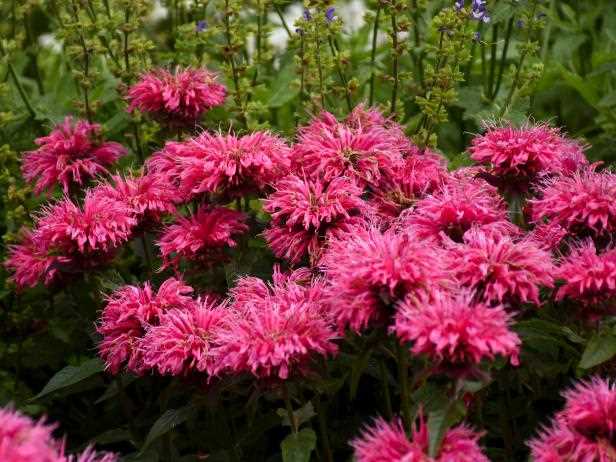
What sets Monarda punctata apart from other varieties is its distinct spotted flowers. The flower heads are composed of multiple tubular florets that are clustered together. Each floret has a white or pale pink color, with deep purple or maroon spots. The spots give the flowers a truly eye-catching and beautiful appearance.
Growth and Care
Monarda punctata is a perennial plant that thrives in full sun or partial shade. It prefers well-drained soil and can tolerate a wide range of soil types, including sandy or clay soils. This variety is known for its ability to attract bees, butterflies, and hummingbirds, making it a great choice for pollinator gardens.
When it comes to care, Monarda punctata is relatively low-maintenance. Regular watering is necessary, especially during dry periods, but it is essential not to overwater the plant. Overwatering can lead to root rot and other issues. Additionally, deadheading the spent flowers can encourage prolonged blooming.
Uses
Monarda punctata has both ornamental and medicinal uses. In gardens, it can be planted as a border plant, in flower beds, or as part of a prairie or wildflower garden. Its unique flowers provide a striking focal point in any landscape.
Medicinally, Monarda punctata has been used by Native American tribes for various purposes. The leaves and flowers can be brewed into a tea that has antiseptic and anti-inflammatory properties. It can be used topically to treat skin conditions or consumed to help relieve digestive issues.
Conclusion
If you’re looking for a unique and striking variety of Monarda for your garden, Monarda punctata is an excellent choice. Its spotted flowers and low-maintenance nature make it a beautiful and easy addition to any garden. Whether you’re looking to attract pollinators or enjoy its medicinal benefits, Monarda punctata is sure to be a standout in your garden.
Questions and Answers:
What is Monarda?
Monarda, also known as bee balm, is a flowering plant native to North America. It is commonly grown in gardens for its attractive flowers and ability to attract pollinators.
What are the different types of Monarda?
There are several types of Monarda, including Monarda didyma (scarlet bee balm), Monarda fistulosa (wild bergamot), and Monarda citriodora (lemon bee balm). Each type has its own distinct characteristics and flower colors.
How do you grow Monarda?
To grow Monarda, you should plant it in a location with full sun or partial shade. The soil should be well-draining. Water the plant regularly, especially during dry periods. Keep in mind that Monarda can spread rapidly, so make sure to give it enough space to grow.
What are some popular varieties of Monarda?
Some popular varieties of Monarda include ‘Jacob Cline’, ‘Blue Stocking’, and ‘Raspberry Wine’. These varieties are known for their vibrant colors and strong fragrance.
Can Monarda attract bees and butterflies to my garden?
Yes, Monarda is known for attracting bees, butterflies, and other beneficial pollinators to the garden. Its bright flowers and sweet nectar make it a favorite among pollinators.







